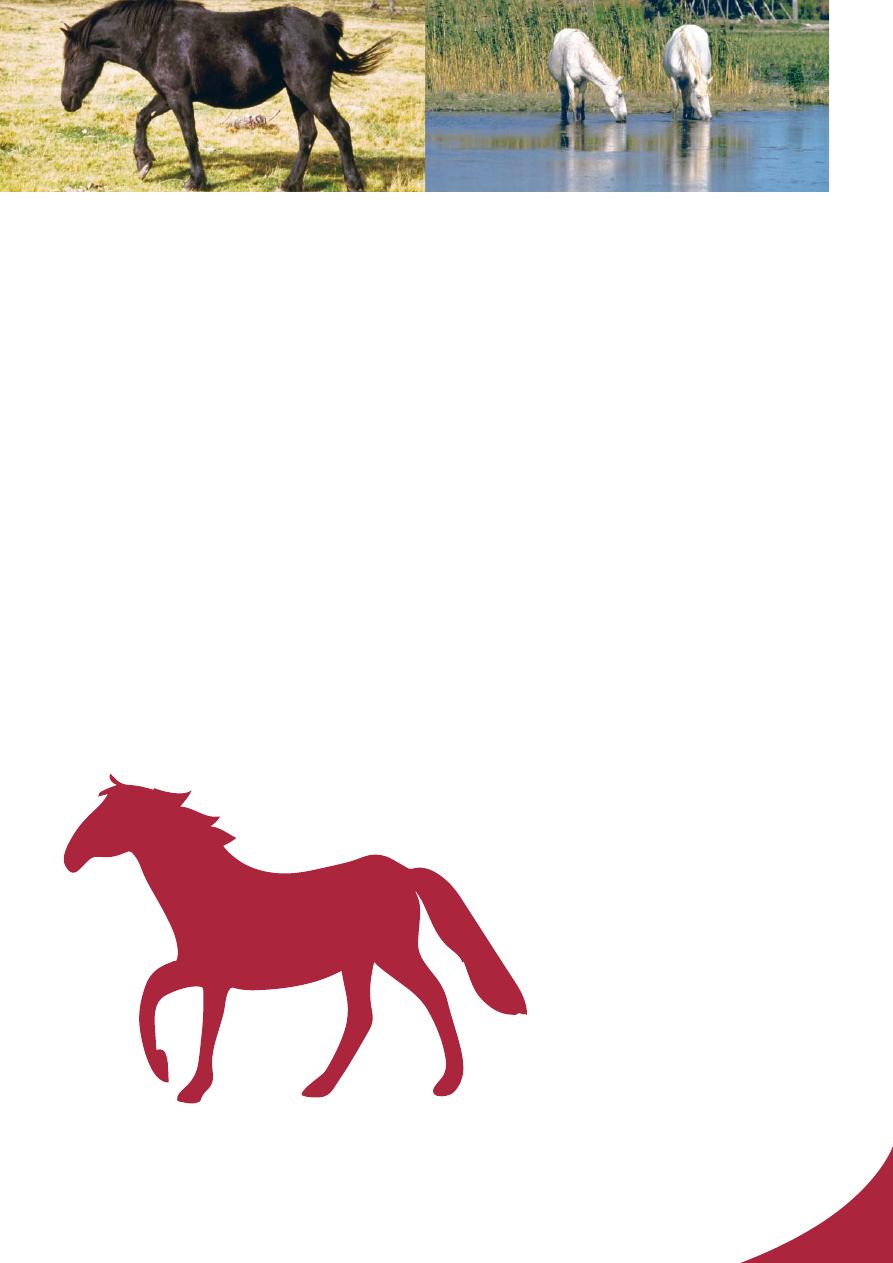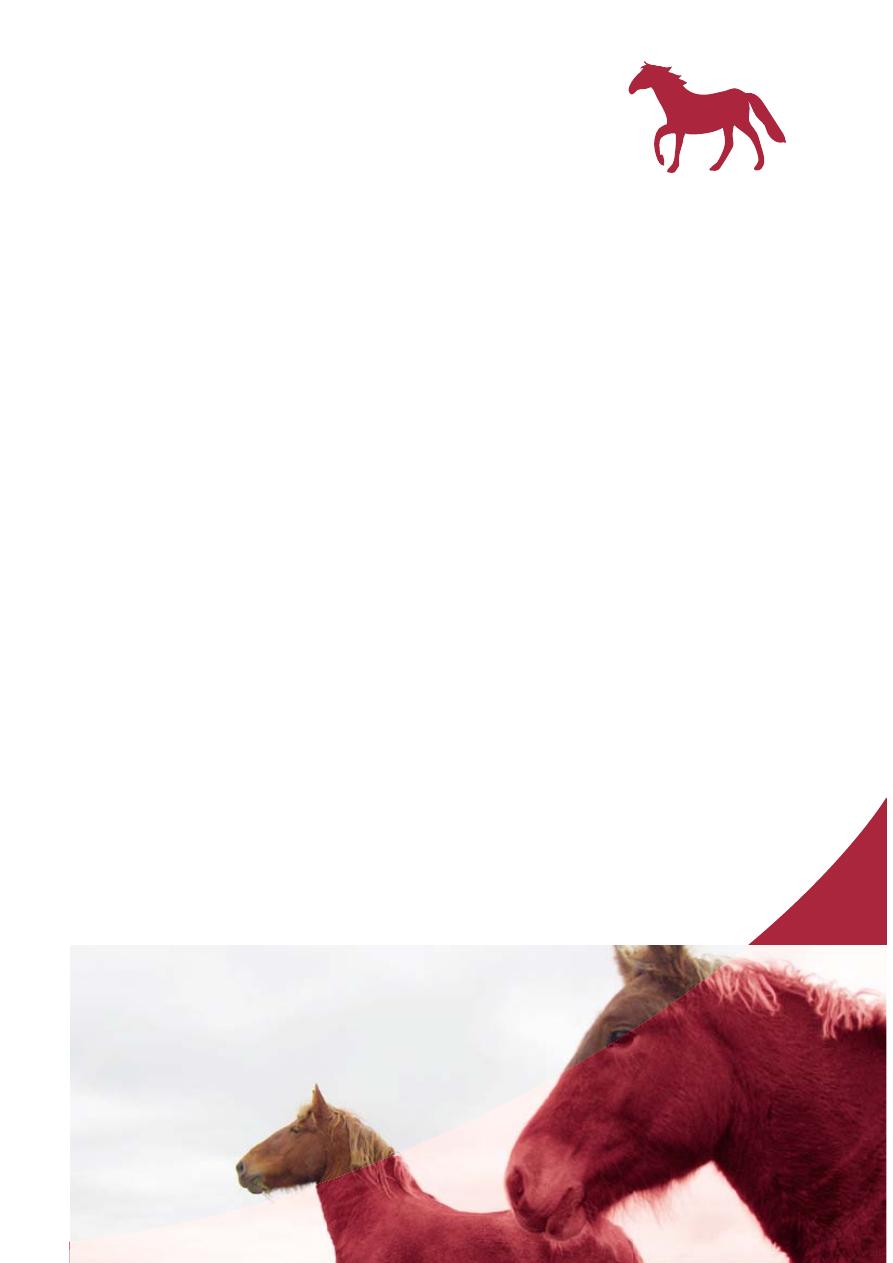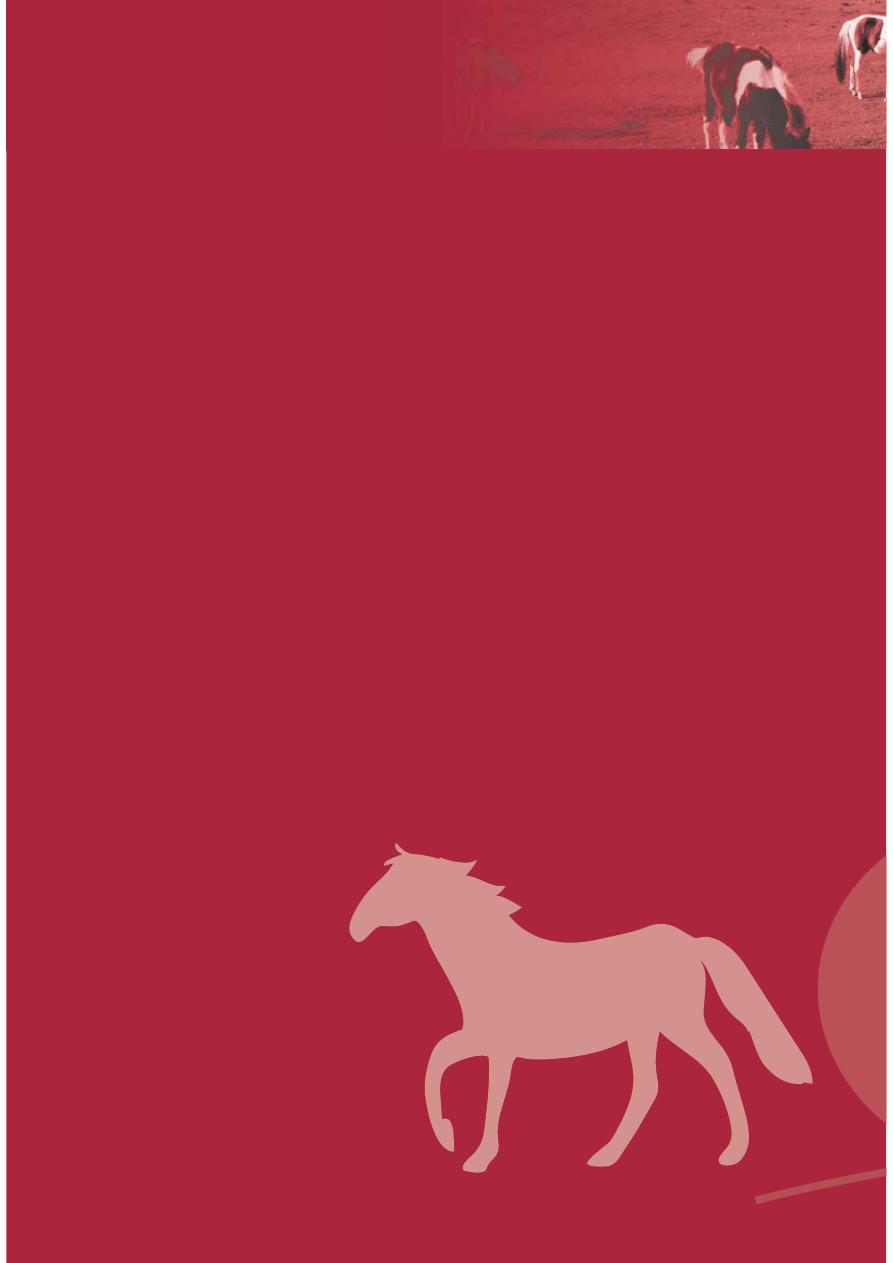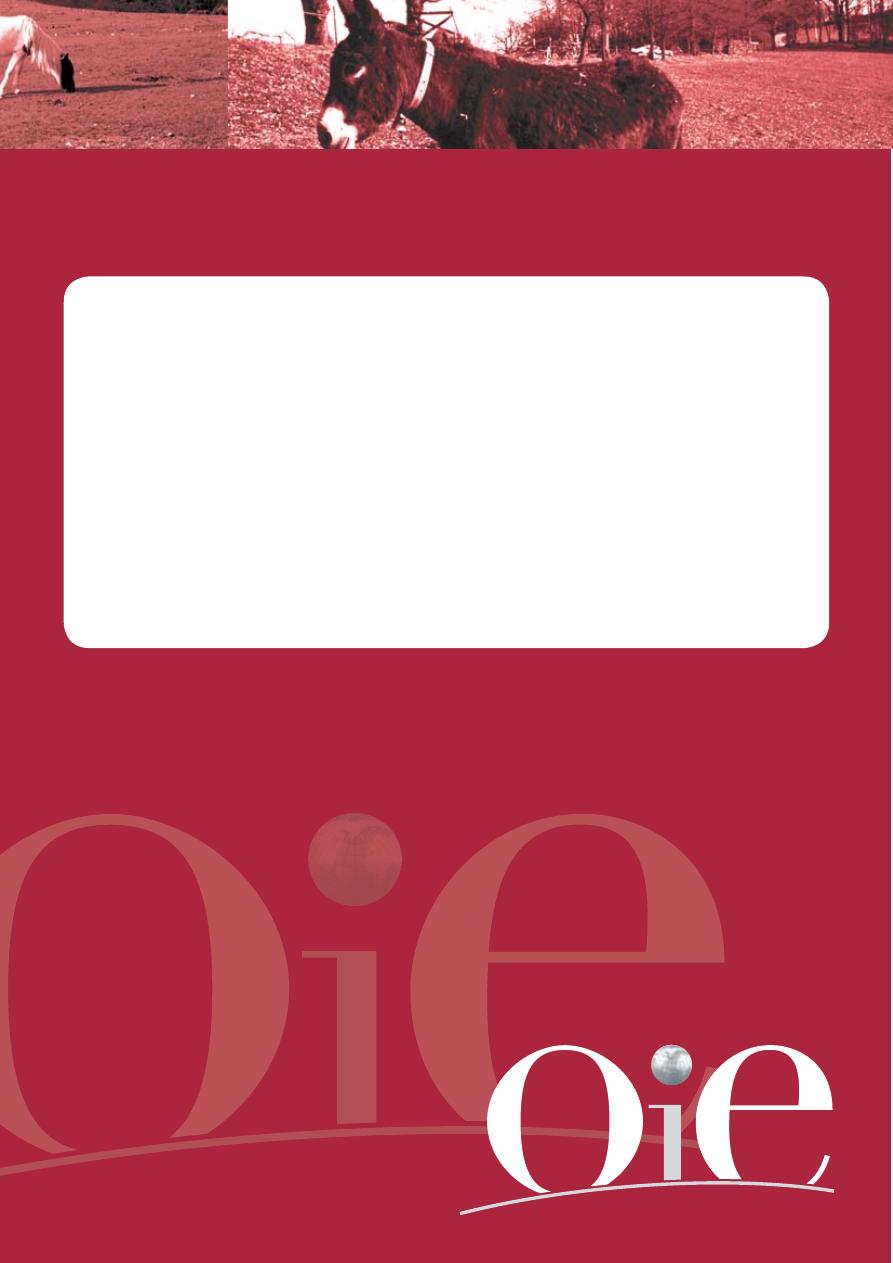
1
What is Equine influenza?
Equine Infl uenza (EI) is a highly contagious though rarely fatal respiratory disease of
horses, donkeys and mules and other equidae. The disease has been recorded throughout
history, and when horses were the main draft animals, outbreaks of EI crippled the
economy. Nowadays outbreaks still have a severe impact on the horse industry.
EI is caused by two subtypes of infl uenza A viruses: H7N7 and H3N8, of the family
Orthomyxoviridae. They are related to but distinct from the viruses that cause human and
avian infl uenza.
Equine Infl uenza is a disease listed in the OIE Terrestrial Animal Health Code and countries
are obligated to report the occurrence of the disease according to the OIE Code.
Equine influenza
General Disease Information Sheets

2
Where is the disease found?
The disease is entrenched in most of the world,
with the exceptions of Australia (where an
important outbreak occurred in 2007), New
Zealand, and Iceland.
How is the disease
transmitted and spread?
Highly contagious, EI is spread by contact with
infected animals, which in coughing excrete the
virus. In fact animals can begin to excrete the
virus as they develop a fever before showing
clinical signs. It can also be spread by mechanical
transmission of the virus on clothing, equipment,
brushes etc carried by people working with
horses.
Once introduced into an area with a susceptible
population, the disease, with an incubation period
of only one to three days, spreads quickly and is
capable of causing explosive outbreaks. Crowding
and transportation are factors that favour the
spread of EI.
What are the clinical
signs of the disease?
In fully susceptible animals, clinical signs include
fever and a harsh dry cough followed by a nasal
discharge. Depression, loss of appetite, muscle
pain and weakness are frequently observed. The
clinical signs generally abate within a few days,
but complications due to secondary infections
are common. While most animals recover in two
weeks, the cough may continue longer and it may
take as much as six months for some horses to
regain their full ability. If animals are not rested
adequately, the clinical course is prolonged.
General Disease Information Sheets

3
Equine influenza
While the disease is rarely fatal, complications
such as pneumonia are common, causing long
term debility of horses, and death can occur due to
pneumonia, especially in foals.
How is the disease diagnosed?
Clinical signs are suggestive of EI, but defi nitive
diagnosis is by serology or isolation of the virus
according to procedures in the OIE Manual of
Diagnostic Tests and Vaccines for Terrestrial Animals.
What is being done to prevent
or control the disease?
Vaccination is practiced in most countries. However,
due to the variability of the strains of virus in circulation,
and the diffi culty in matching the vaccine strain to
the strains of virus in circulation, vaccination does
not always prevent infection although it can reduce
the severity of the disease and speed recovery times.
Vaccines are produced according to the guidelines in
Chapter 2.5.7 of the OIE Manual of Diagnostic Tests
and Vaccines for Terrestrial Animals. The OIE also
convenes an Expert Surveillance Panel on Equine
Infl uenza Vaccine that examines the strains of virus
in circulation making recommendations on which
strains should be included in the vaccines.

Equine influenza
When the disease appears, efforts are placed on
movement control and isolation of infected horses.
The virus is easily killed by common disinfectants,
so thorough cleaning and disinfection is part of
biosecurity measures in responding to the disease.
Since the disease is most often introduced by an
infected animal, isolation of new entries to a farm or
stable is paramount to preventing the introduction
of disease to a premise.
For movement of horses across international
boundaries the OIE Terrestrial Animal Health Code
sets the standards by which countries should
control the import of horses.
What is the public
health risk associated
with this disease?
There is little risk to public health. In experimental
settings the virus has shown the ability to infect
humans, and a few people in contact with infected
horses developed antibodies to equine infl uenza
viruses, but no humans exposed to the virus have
become ill.
4

5
More Information?
General Disease Information Sheets
Ask our experts:
List of Reference Laboratories:
www.oie.int/en/our-scientifi c-
expertise/reference-laboratories/
List of Collaborating Centres:
www.oie.int/en/our-scientifi c-
expertise/collaborating-centres/
References:
1.
OIE Terrestrial Animal Health
Code:
standard-setting/terrestrial-code/
2.
OIE Manual of Diagnostic Tests
and Vaccines for Terrestrial
Animal:
terrestrial-manual/access-online/
3.
OIE Technical Disease Card:
4.
The Center for Food Security
and Public Health, Iowa State
University
www.cfsph.iastate.edu/
5.
Merck Veterinary Manual:
www.merckvetmanual.com/
mvm/index.jsp?cfi le=htm/bc/
toc_50000.htm
6.
Atlas of Transboundary
Animal Diseases Animales
Transfronterizas
P. Fernandez, W. White;
Ed.: 2011

6
• 12, rue de prony • 75017 paris france
• tel. 33 (0)1 44 15 18 88 - fax 33 (0)1 42 67 09 87
• www.oie.int • oie@oie.int
Cover photo:
© C.Maitre INRA.
Inside photos: © N.Denormandie OIE, © F.Diaz OIE,
© M.Meuret INRA, © J.Weber INRA.
Key Facts
•
Absyrtus, a Greek veterinarian, recorded a
disease outbreak resembling influenza in
horses in 433 AD.
•
An outbreak in 1872 that spread throughout
North America affected so many horses
that it crippled the transportation of goods:
ships were unable to be unloaded, street
cars could not run, and even the firefighters
were unable to operate.
•
In 1987, an equine influenza epidemic in
India affected more than 27,000 animals
killing several hundred.
•
In 2004 an outbreak of influenza in dogs in
the United States was caused by the equine
influenza virus H3N8.
•
A n o u t b r e a k i n A u s t r a l i a i n A u g u s t
2007 infected horses on 10651 premises
in three months despite the imposition
of movement controls. The disease was
eradicated, but the cost of treatments and
cancellation of events was about 1 billion
dollars Australian.
